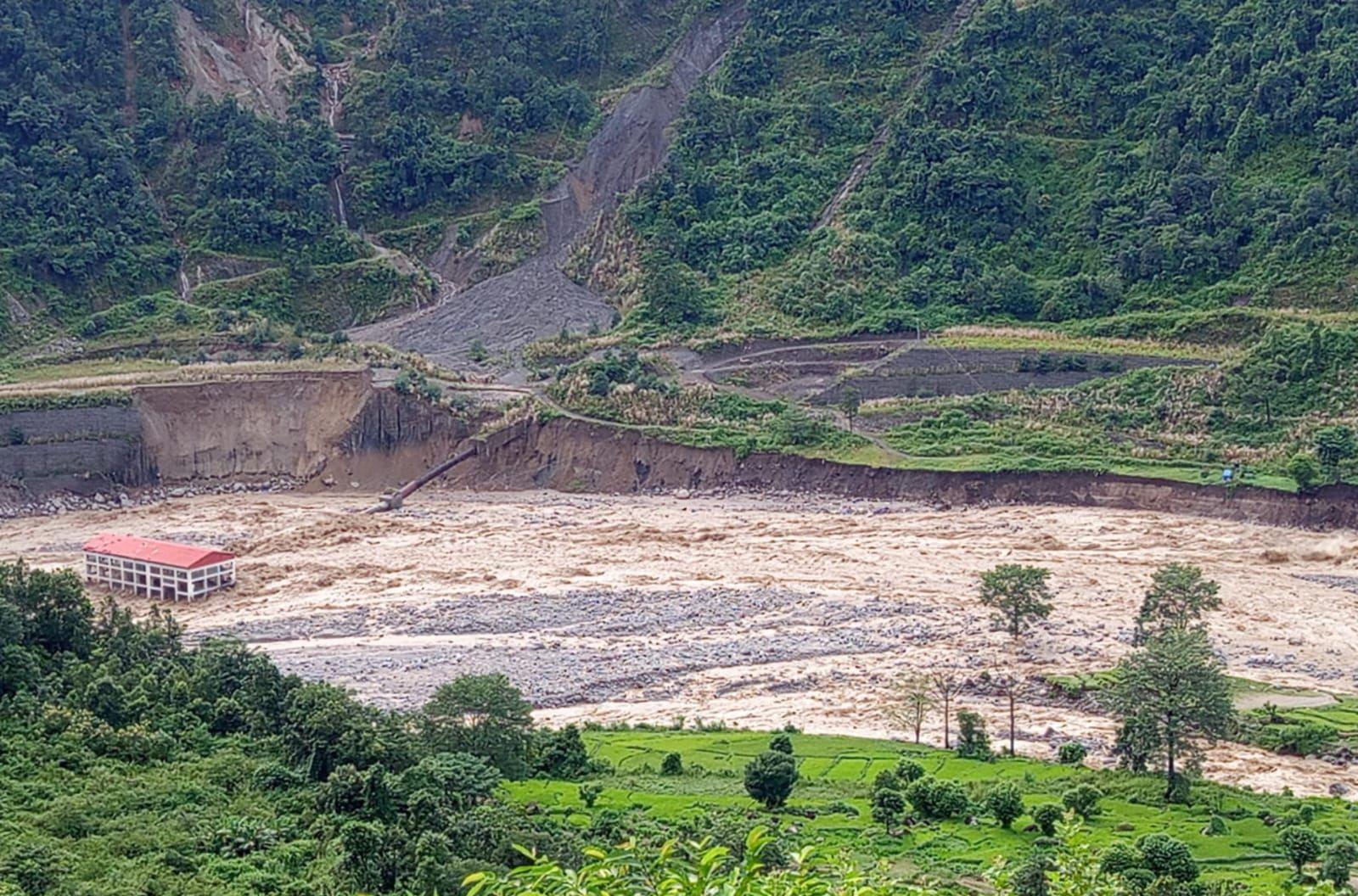32 Hydropower Projects Affected by Heavy Rainfall — Ilam Hit the Hardest
Author
NEPSE TRADING

Continuous rainfall from October 3 to 5 (Ashoj 17–19) has caused severe damage to hydropower projects across Nepal. According to the Independent Power Producers’ Association of Nepal (IPPAN), a total of 32 hydropower projects in 10 districts have been affected by floods and landslides.
Affected Projects and Capacity
Based on IPPAN’s preliminary assessment (as of Monday afternoon), 17 operating projects with a combined capacity of 180 MW and 15 under-construction projects totaling 338 MW have suffered damage.
This disaster has also increased the financial burden on insurance companies. Following the recent Gen-Z movement, insurance firms had already received over Rs. 23 billion in claims, and now additional claims are expected from the hydropower and other sectors due to the new damages.
Early Warning Helped Minimize Human Casualties
According to Ganesh Karki, President of IPPAN, the association’s collaboration with the Department of Hydrology and Meteorology this year allowed timely flood early warning dissemination.
He stated that this coordination helped prevent human casualties and ensured that physical damage remained much lower compared to previous years.
Ilam the Hardest Hit — 15 Projects Shut Down
Out of the 17 operational projects, 15 are located in Ilam district, all of which have been affected. The following major hydropower plants in Ilam are currently non-operational:
Maikhola (4.5 MW)
Maikhola Cascade (8 MW)
Sanima Mai (22 MW)
Mai Cascade (7 MW)
Super Mai (7.8 MW)
Super Mai A (9.6 MW)
Super Mai A Cascade (3 MW)
Jogmai Khola (7.6 MW)
Jogmai Cascade (5.2 MW)
Lower Jogmai (6.2 MW)
Maibeni (9.5 MW)
Upper Mai (9.9 MW)
Mai C Cascade (5.1 MW)
Puwa 2 (4.96 MW)
Upper Puwa 1 (3 MW)
Beyond Ilam, two other projects were affected — Hewakhola (14.9 MW) in Panchthar and Likhu-4 (52.4 MW).
All except Likhu-4 are currently out of production; Likhu-4’s generation was halted only for a little over an hour.
Under-Construction Projects — Access Roads Severely Damaged
Most under-construction projects sustained heavy damage to their access roads, according to IPPAN’s report.
In Manang, the Dana Khola project (49.95 MW) saw landslides along several sections of its 12-kilometer access road.
In Ilam, the Siddhikhola project (10 MW), which was about to begin commercial production within 10 days, suffered flood damage that postponed its start date.
In Panchthar, floods washed away construction materials and equipment for Sabhakhola B (21.5 MW) and Hewakhola (9.9 MW).
In Sindhupalchok, access roads for four projects — Bramhayani (36.51 MW), Upper Bramhayani (15.15 MW), Balefi (40 MW), and Lower Balefi (22.5 MW) — were swept away.
Additional affected projects include:
Langtang Khola (20 MW) in Rasuwa
Irkhuwakhola B (15.5 MW) and Upper Irkhuwakhola (14.5 MW) in Bhojpur
Upper Thulo Khola (22.5 MW) in Myagdi
Hidi Khola (6.82 MW) in Lamjung
Khimti-2 (48.8 MW) in Ramechhap
Gasali Khola (4.5 MW) in Dhading
Because access routes to these sites remain blocked by landslides, IPPAN said it could take more time to obtain a complete damage assessment.
Insurance Burden and Energy Security Concerns
This disaster has raised new concerns about Nepal’s energy security and insurance resilience:
Insurers are likely to face a surge in compensation claims.
There is a clear need to reassess risk evaluation and insurance coverage for natural disasters.
Long-term sustainability of hydropower development now demands stronger early-warning systems, climate-resilient engineering, and rapid disaster recovery frameworks.
This year’s floods once again highlighted how vulnerable Nepal’s hydropower infrastructure remains to natural disasters.
While early-warning coordination between IPPAN and the meteorological department helped avoid human losses, the event exposed major gaps in disaster preparedness and climate risk management.
Nepal must now prioritize climate adaptation, insurance reform, and robust emergency management policies to ensure that the country’s hydropower sector can withstand future climate shocks.



